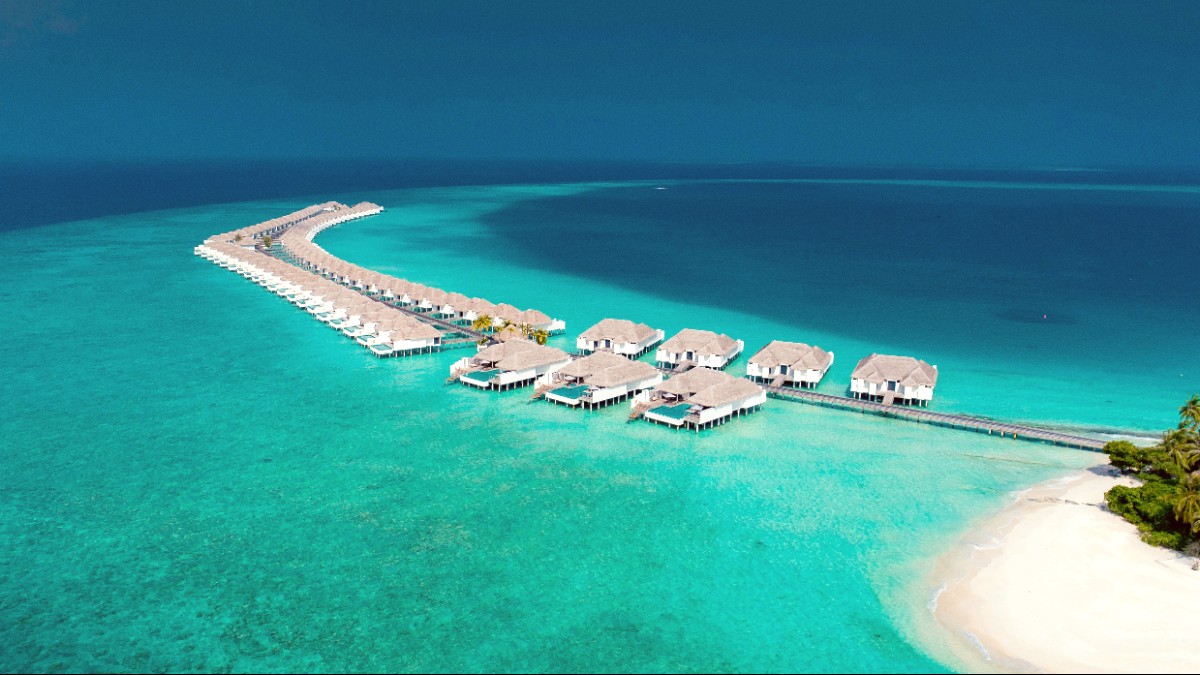
Maldives
Baa Atoll draws visitors with its promise of remarkable underwater encounters. Picture yourself snorkeling alongside majestic manta rays as they feed in plankton-rich waters, or spotting the gentle giants of the ocean, whale sharks, moving gracefully beneath the surface. These encounters happen in specific areas like Hanifaru Bay, a globally renowned site for these seasonal aggregations. Beyond these iconic creatures, the atoll’s reefs burst with color from countless fish species and healthy corals, creating an underwater spectacle.
The stunning beauty of the Maldives, with overwater bungalows, presents an unique stay.
Prepare for a trip where stunning landscapes and ocean wonders combine with warm hospitality and cultural insights.
Baa Atoll, officially known as Maalhosmadulu Dhekunuburi, is a special position within the vast Maldivian archipelago. It sits in the central-western part of the island chain, approximately 110 to 130 kilometers (68-81 miles) north of Velana International Airport (MLE), the main international gateway in Male'. This distance means a short domestic flight or a scenic seaplane transfer connects you to its shores.
The atoll itself is a natural wonder, forming part of a larger geological structure called Southern Maalhosmadulu. It spans about 42 kilometers (26 miles) in length and 32 kilometers (20 miles) in width. This area encompasses 75 islands, providing a vast marine playground. Thirteen of these islands are home to local communities, offering a glimpse into traditional Maldivian life. The remaining islands are either uninhabited or developed into exclusive luxury resorts, each a private haven.
Hani Kandu channel separates it from Raa Atoll.
Moresby Channel separates it from Lhaviyani Atoll.
These channels influence currents and marine life patterns, contributing to Baa Atoll's rich biodiversity.
Atolls are ring-shaped coral reefs, islands, or islets surrounding a lagoon, formed by coral growth on submerged volcanoes.
Baa Atoll's extensive lagoon and reef system contribute to its status as a marine biodiversity hotspot.
Seaplanes give breathtaking aerial views of the atoll's formation, demonstrating the coral rings and deep blue lagoons. Domestic flights give a quicker, often more economical alternative.
Seaplanes give breathtaking aerial views of the atoll's formation, demonstrating the coral rings and deep blue lagoons.
Domestic flights give a quicker, often more economical alternative for island connections.
Baa Atoll truly is an exceptional place to visit, with geological processes shaping an environment that supports an incredible array of species, making every underwater exploration an adventure.
Baa Atoll is a rich history, intertwining natural evolution with human settlement. Its fame greatly expanded in 2011 when UNESCO recognized it as a Biosphere Reserve. These gatherings occur in specific areas, with Hanifaru Bay standing out as a global hotspot for such marine spectacles. The UNESCO status guides development within the atoll to protect its precious ecosystems.
The atoll's human history stretches back centuries. Evidence suggests ancient Buddhist communities resided here before the Maldives transitioned to Islam in the 12th century. These early settlements developed a deep connection to the ocean, relying on fishing and maritime trade for their livelihoods. This historical dependence on the sea shaped the traditional Maldivian way of life on inhabited islands today.
One enduring cultural legacy in Baa Atoll is the traditional craft of lacquer work, known locally as Laajehun.
The atoll's marine ecosystem has always supported local livelihoods, with fishing remaining a traditional industry.
The Biosphere Reserve designation is a commitment to sustainable livelihoods for future generations.
Islands like Thulhaadhoo, within Baa Atoll, preserve this intricate art form. Artisans create colorful, decorative patterns on wooden objects, a skill passed down through generations.
Central-western Maldives, 110-130 km north of Velana International Airport (MLE).
UNESCO Biosphere Reserve since 2011, noting its globally important biodiversity.
75 islands, with 13 inhabited by local communities and many hosting luxury resorts.
Seaplanes make swift and scenic transfers across the Maldivian atolls.
Domestic flights provide a convenient travel alternative to Baa Atoll.
This concise overview displays essential facts, preparing you for natural wonders, cultural insights, and travel experiences.